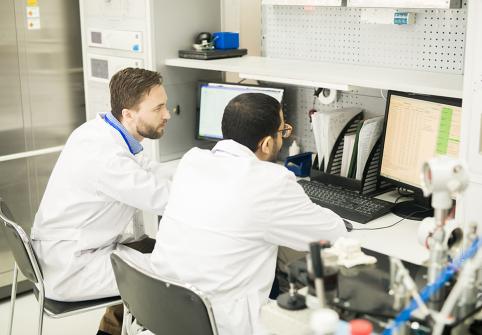Opinion editorial Entering Phase 2 of Re-Opening: Lessons and Truths for Public Policy From the Past Six Months
Dr. Leslie A. Pal
As countries and cities re-open around the world, amid the hopeful signs we also hear of setbacks, spikes, and re-closings. While there is still much we do not know about COVID-19, the last six months have taught us at least five basic lessons, and one big truth.
The first lesson is to be clear about what we are dealing with. The case numbers tell us something important, and when cases are increasing, we should rightly be concerned. However, cases are just that, cases. They tell us about infections, something about infection rates and spread, but they also can mislead. The number of cases, for example, is in part an artefact of the number of tests we take. Given the existence of the virus in a population, the more tests you take, the greater the likelihood of discovering cases.
The recent spikes in the case numbers are now always accompanied by fine print that this could be due to more tests. The other point is that cases do not tell us anything about recovery rates, or death rates. Cases can go up, but so can recoveries. Deaths can remain stable or increase at a much slower rate than the case number. Countries like Qatar and Singapore have sadly had among the world’s highest cases per capita, but among the lowest number of deaths.
The second lesson of the last six months is that COVID-19 hits vulnerable populations hardest. Latest statistics from New York State show that people at an age-range of 65-74 years old are three times more likely to die of COVID-19 than those between 45 and 64, and 30 times more likely than those 18-44. Unsurprisingly, in many countries, old age homes were a key site of infections and death.
The point to draw from these first two lessons is that at this stage of the pandemic, when infection and hospitalization curves have been flattened, is not to panic when case numbers occasionally spike. That should indeed be expected as more tests are conducted. It is more significant to pay attention to recovery and death rates, and to whether vulnerable populations are being sufficiently protected.
The third lesson of course is not to be complacent. The medical science on COVID-19 is revealing much more about its incidence and effects on different organs, as well as modes of care, even without drugs, that can alleviate symptoms. But we should remain vigilant.
Avoiding the “three Cs” should be standard practice – a public health message that has been perfected by Japan. Avoid closed spaces with poor ventilation; avoid crowded places; avoid close-contact settings. And really stay away from situations where these overlap – closed, crowded, and close-contact spaces. Wear a mask in public places. Sanitize.
The fourth lesson, particularly during re-opening, is that this phase should not be misunderstood as an overnight return to “normal.” People are understandably impatient to get back to restaurants, parks, performances, classes, and family gatherings. But as the de-openings start occurring in some American states like Texas and California, we can see the results when governments moved too quickly, and populations ignored common sense. The re-opening phases will be with us for many more months, and we should realistically expect to continue social distancing and other preventive measures at least through the fall.
And that is the fifth, hard lesson. With re-opening, there have to be phases and “gateways”, to use the terminology of the Centers for Disease Control (CDC), as well as indicators of success and failure. Cases may go up, but that in itself is just an amber light – it suggests caution, not closure. Responsible policy-making should have phased re-openings with carefully calibrated safety measures. Eating at a restaurant is going to be an ordeal for instance, and if things get worse, then we should expect adjustments and even reversals.
These lessons are small but important. They are clear distillations of our collective experience these past months. They also reveal a big truth, one that gets obscured in discussions about the complexity of modern social, economic, and technological systems. In the end, a lot of what makes this complexity work is individual compliance, common sense, and prudence. This is not a truth much acknowledged these days. For ideologists on the left, everything depends on history and structure, and people are just the puppets of past injustice. For ideologists on the right, with a law and order bent, people just need to be told what to do. For technocrats, it is all a matter of the right policy design to induce and incentivize people to do the right thing.
Of course, structure matters. People without access to clean water can hardly sanitize. Migrant workers living in crowded dorms can hardly avoid the “three Cs”. Countries with aging populations and badly regulated old age homes are going to have high death rates from COVID-19, no matter how responsible people are. But structure, context and regulations are not everything, and the pandemic has shown the importance of individual actions. Parents protecting their kids, not to mention homeschooling them. The people in parks keeping a safe distance. Wearing a mask. Washing hands. Policy-makers have the responsibility of designing and implementing the messages, regulations and the constraints, but without willing and sensible compliance, it all falls far short and risks failure.
A popular idea in policy-making circles in past years has been “nudging”. Better to gently play on people’s unconscious motivations to get them to do the right thing – put the carrots ahead of the desserts in the buffet line. The pandemic has shown us the limits of this. People need to be thoughtful and aware, responsible and prudent, careful, and measured. This applies as much to dealing with pollution, climate change, or other collective problems, as it does to the pandemic.




